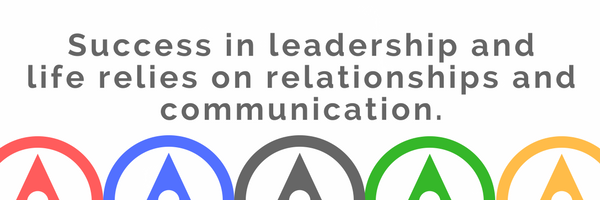5 Ways to Give Quality Performance Feedback

Dislike performance reviews but love giving helpful feedback?
A major challenge with performance reviews is that we feel we are being judged or graded and that gets our defenses up right away.
This 3-blog series is focused on how to have performance conversations that provide helpful feedback and achieve the intended/desired outcomes. (Ex. Reducing anxiety in performance convos; providing valuable insight to the recipient; great questions to ask in 1-1 meetings, etc.)

Blog #1
4 Problems with Performance Reviews and how to do them differently.
Problem #1
Annual or bi-annual performance reviews are great for updating and clarifying long-term goals with staff, discussing their career aspirations, how their role supports the organization’s goals, and what needs or challenges they have in meeting their career goals. Yet most reviews try to focus on 6-12 months worth of feedback and results, often missing valuable accomplishments that you (or your boss) may never see, or remember.
Problem #2
“Can I give you some feedback?” is a threat to our reptilian brain. Our hypersensitive amygdala translates that to: “Can I tell you what’s wrong with you?”
So performance reviews are often perceived as such, even when the recipient feels they have done well or we believe we are delivering the message well. The brain is already in fight, flight or freeze mode.
Problem #3
Rating people sucks. It sucks our energy and their confidence.
Even though it has a purpose, being told you’re a 10 or exceeded expectations or that you’re a 5 and didn’t meet expectations, puts people in boxes that don’t capture who they are, the sleep they lost worrying about work, the going above and beyond they know they did, the things they have going on in their personal lives that impacted them at work, the working on the bus, at their kids’ sports, the challenges they had with colleagues or external influences!
Problem #4
Feedback is problematic when it implies or is received as judgement, blame, shame or guilt. This is where a sense of unfairness, harassment and unwellness evolves.
But this is the world you live in. Your organization has a rating system. You have done and will do all-encompassing, bi/annual reviews. You have asked, “can I give you some feedback?” and maybe you’ve thrown the word “constructive” in there to soften it! You have said things that people perceived as a judgement. This is our reality.
It is what it is, but it can be done better.
How to do Performance Reviews differently:
1) Talk about Roles instead of Job Titles.
We coach people (managers and employees) to understand what the position (role) they are in really needs to be successful, regardless of who is in that role.
Use the A.S.K. principle.

Have employees tell you what Attitudes (way of thinking and behaving), Skills (leadership), and Knowledge (technical) are needed no matter who is rockin’ this role.
In meetings, have employees share their answers to these questions:
- What are the needs in each of the A.S.K. areas?
This is how they and you establish a baseline. Example: Describe the attitude, skills and knowledge needed for anyone to feel satisfied and be successful in this role.
- Where are they right now in each of the A.S.K. areas?
This allows the employee to establish a perspective on what is happening for them today. Their starting point.
- What do they need in each of those areas to make it even more satisfying?
This allows the person to determine any gaps or areas they would like to pay attention to until next time. They look at what they have established in Question #1 as the needs of the role, and they can keep checking in to see what adjustments they want to make to feel satisfied and be successful.
2) Check for alignment.
As a manager, what do you see as the A.S.K for this role? Answer the three questions above, from your perspective. Compare notes and seek to understand any gaps, with curiosity, and no judgement.
3) Discuss the employee’s progress using A.S.K.
Request that employees come with specific examples of Attitude, Skills and Knowledge improvements or changes that they noticed since the last discussion. What caused any changes? What outcomes did these changes lead to? What’s next?
This allows them to reflect on how they are doing, why and what the impacts are/can be, and what their next level looks like.
4) What’s good for them is good for you.
Ask them what needs (in the A.S.K. principle) they think you can help them meet.
Ask yourself: How do I think I can help them?
Find out if your own A.S.K.s are getting in their way.
5) Invite them to request your insights on their performance, whenever they need it.
And ask for their insights on your performance. (yes, this requires vulnerability… AND establishes huge trust and engagement)
If ratings, are a part of your organization’s culture and that isn’t changing, you can still choose to lead conversations that truly help people perform. Focus on having quality coaching conversations on a weekly, bi-weekly and “as you see it” basis.
Can you do it without language that implies judgement, blaming, shaming or guilting?
Just do your best! We’ll elaborate in the next blog.
If you are looking to create real change in your leadership effectiveness, your team and your organization, please contact us to discuss how we can help you build leadership capacity to meet the challenges.
#thisisauthenticleadership
